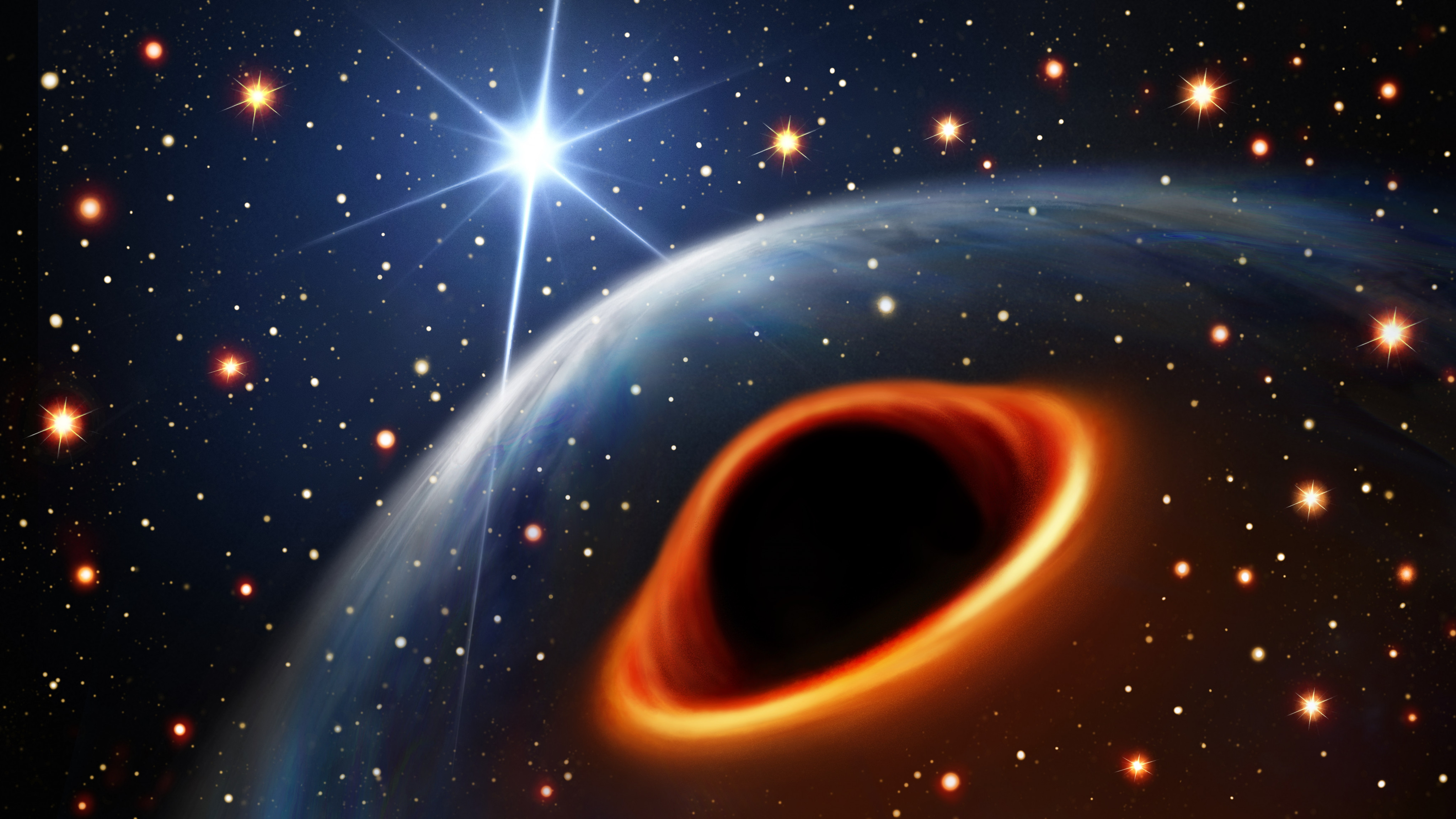
Astronomers have spotted a rare "'missing link"' black hole, and it's lurking right in the center of our galaxy.
The IRS 13 star cluster has long been a puzzle for astronomers. Located just a tenth of a light-year from the heart of our Milky Way galaxy where the Sagittarius A* supermassive black hole resides, the proximity of the cluster to the enormous black hole's powerful gravitational pull means that it shouldn't have much structure.
But after investigation, researchers have discovered that the cluster's hot, massive stars are moving in an orderly pattern. Their explanation, outlined in a study published July 18 in The Astrophysical Journal, is that the stars are anchored by an elusive black hole that is interacting with Sagittarius A*.
"This fascinating star cluster has continued to surprise the scientific community ever since it was discovered around twenty years ago," lead author Florian Peissker, an astronomer at the University of Cologne, in Germany, said in a statement. "At first it was thought to be an unusually heavy star. With the high-resolution data, however, we can now confirm the building-block composition with an intermediate-mass black hole at the centre."
Related: What would happen if a black hole wandered into our solar system?
Black holes are born from the collapse of giant stars and grow by gorging on gas, dust, stars and other black holes. Currently, known black holes tend to fall into two general categories: stellar-mass black holes, which range from a few to a few dozen times the mass of the sun, and supermassive black holes, cosmic monsters that can be anywhere from a few million to 50 billion times as massive as the sun.
Intermediate-mass black holes — which, theoretically, range from 100 to 100,000 times the sun's mass — are the most elusive black holes in the universe. While scientists have spotted evidence for several promising candidates, no intermediate-mass black holes have been definitively confirmed to exist.
This poses a puzzle for astronomers. If black holes grow from stellar to supermassive size by gorging themselves in an endless feeding frenzy, the lack of confirmed sightings of black holes in their awkward teenage phases points to an even bigger hole in our understanding of the cosmic monsters.
To investigate the structure of IRS 13, the astronomers took observations using the Very Large Telescope, the Atacama Large Millimeter/submillimeter Array and the Chandra X-ray space telescope and added them into a mathematical model of the star cluster.
The stars' motions pointed to a seemingly unoccupied space in the center of the cluster, but when the researchers peered into this space, they detected X-rays beaming from a ring of ionized gas — clear evidence of a black hole's accretion disk. Orbital calculations revealed that a mass 30,000 times that of our sun is likely occupying the region: an intermediate black hole.
With the mini black hole candidate detected, the astronomers want to conduct follow-up observations with the James Webb Space Telescope and the Extremely Large Telescope (currently under construction in Chile's Atacama desert). These will not only illuminate the strange behavior of the star cluster, but offer insights into the key mystery of how mini black holes and their gigantic cousins operate.







